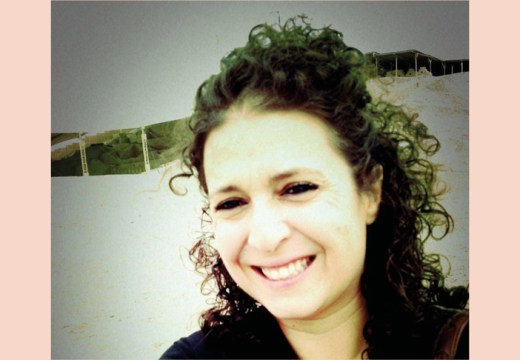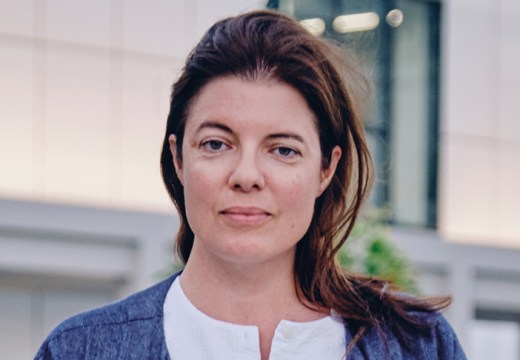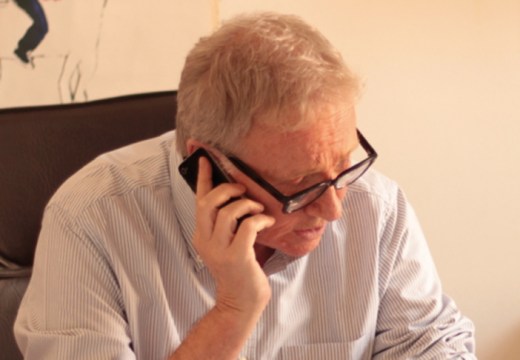New York
What first sparked your passion for art?
I come from a family that has always supported the arts, and that felt the need to be engaged with cultural organisations wherever we lived. My mother actually ran a small non-profit gallery in the ’80s, a platform for Middle Eastern art. But it was when I went to Brown University, to study art history, that things really clicked for me – I felt like I was learning this new language, and was able to connect with new ideas. I ended up writing a thesis on Léon Bakst and the Ballets Russes.
It was during my Masters degree at the Courtauld – I took the museum theory course there – that I became really interested in museums, and particularly in the idea of collaborating with an established museum to build a similar platform in the Middle East. Even though I had never lived there, and was born and raised in Washington, D.C., my family still had ties to the region; I was always interested in building bridges, in connecting where we were living to where we were originally from. After a scholarship at MoMA, I was appointed as a curator on the Guggenheim Abu Dhabi project.
What motivated you to start collecting seriously?
As much as I enjoyed working at museums, at some point I realised that if you collect contemporary art you can support artists’ careers very directly. Buying one work of art could help an artist pay the rent for the month, that kind of thing. That’s why I’ve always focused on younger, emerging artists, and tried to lend support to artists that I believe in. Building relationships with artists from the Middle East has been especially important for me, allowing me to connect with my background and begin to understand the region better – and do so through the eyes of artists. I’ve learnt so much about the Lebanese Civil War from the many artists who have made such poignant work about it, and about the plight of the Palestinian people from Palestinian artists.
You’re involved with many institutions and organisations, including the boards of MoMA PS1, Creative Time, Bidoun, and as a member of the advisory council of Art Dubai. How important is it for collectors to offer this type of support?
It’s equal to collecting, I’d say, if not even more important. I care a lot about supporting platforms and organisations with missions that I value, places that build audiences for the most important artists of our time, and ensure that they’re able to express themselves. The first board I ever joined was for Creative Time, a small organisation with a big mission: to present large-scale art projects in unexpected places in New York. It was run by Anne Pasternak for 21 years, before she became the director of the Brooklyn Museum – she’s an incredible person, and I wanted to support her vision.
I’ve always admired MoMA, and its efforts to remain current and essential – above all through its affiliation with PS1, which is a laboratory for contemporary and experimental art. The director of MoMA, Glenn Lowry, has deep and strong ties to the Middle East. I also support the Guggenheim – and specifically their Middle East programming in New York. The Guggenheim has ventured into the Middle East like no other institution, and I thought it was essential that the museum in New York reflected that development. I’m the founding chair of its Middle East Circle, supporting programming and acquisitions of contemporary Middle Eastern art.
Having worked on the Guggenheim Abu Dhabi project, and lived in Dubai for eight years, what’s impressed you most about how the art sector in the UAE is developing?
It feels like a pivotal time for the cultural landscape in the Gulf. Of course there are institutions that have been doing important things for a long time, like the Sharjah Art Foundation, and there have been great artists like the late Hassan Sharif. Art Dubai has acted not just as an art fair but as a major meeting point, as a platform for artists from the region. The art prize that the fair ran offered transformational opportunities for artists to be commissioned – to make work on a scale they had previously only dreamt of.
What’s been exciting recently is that people are thinking about a complete arts infrastructure in the UAE, with major museums in Abu Dhabi, essential exhibition spaces in Sharjah, and then great galleries developing in Dubai, like the Third Line and newer places like Grey Noise. There’s a real feeling that people are working side by side to make the UAE a centre for creativity – there’s a real camaraderie.
Could more be done to promote work by artists from the Middle East outside the region?
People are more aware of it than ever: these days the Sharjah Biennial is on every international curator’s radar, for example. More could always be done, particularly to ensure that the current interest isn’t just a fad. Like, at the moment we’re looking at artists from this part of the world, you know? There needs to be an ongoing artistic dialogue between the Middle East and the rest of the world, especially at a time when I feel like there are political forces, in the US, Britain and elsewhere, working hard to destroy that type of connection. People should know that the Middle East deserves to be visited, that its culture is there to be accessed.
See more 40 Under 40 Middle East Patrons
Unlimited access from just $16 every 3 months
Subscribe to get unlimited and exclusive access to the top art stories, interviews and exhibition reviews.








